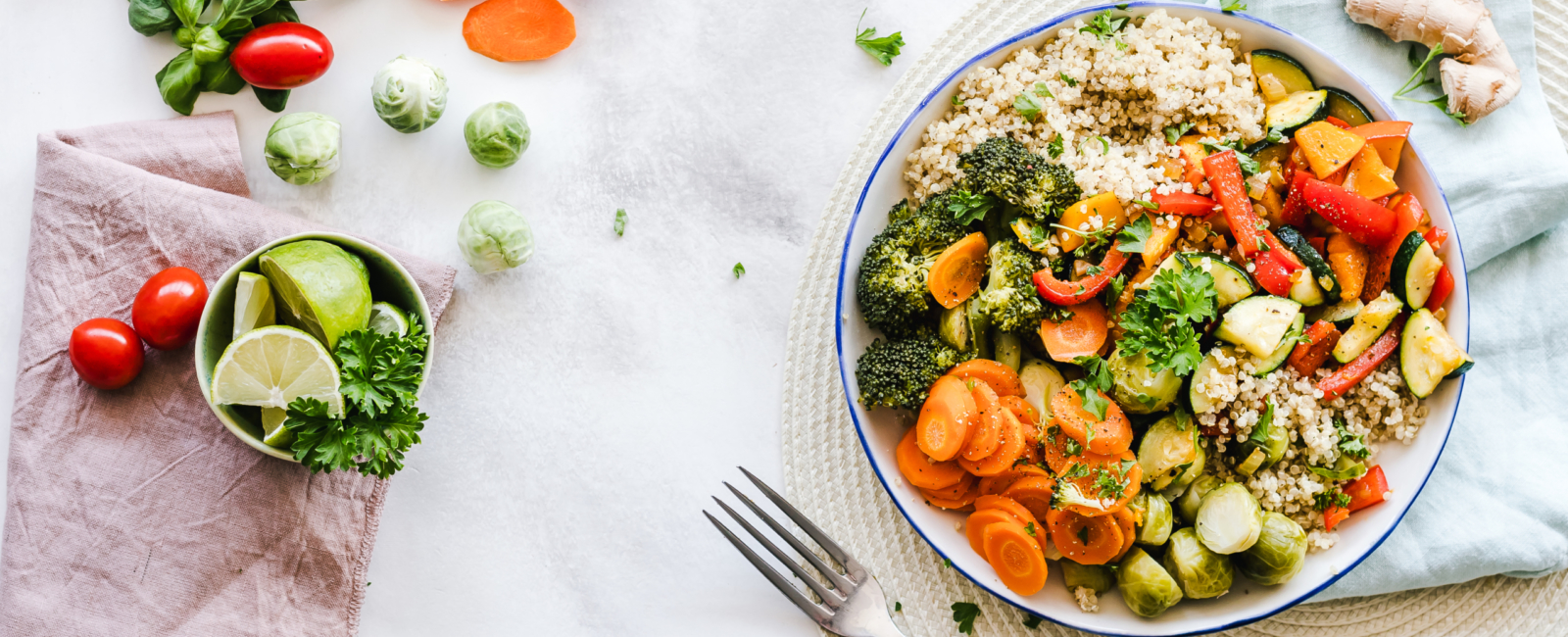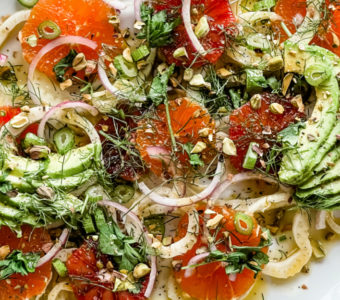- Wellness
Brain Boosting Blueberry Vanilla Almond Muffins
cook / prep 1 hr 30 mins

So your best friend feels great doing the keto diet, your sister swears by being Paleo, and your favorite blogger preaches going gluten-free. The thing is, there is no one size fits all when it comes to nutrition and health. What may work for your bestie, may or may not work for you because of your unique genetics, biochemistry, and lifestyle. As Shakespeare said, “One man’s meat is another man’s poison.”
An Elimination Diet gives you the opportunity to “reset” and start fresh and to transition to a cleaner and healthier diet.
The Elimination Diet is a way to find out what works for you and what doesn’t. It’s a way to gain information about what foods make you feel good and which ones make you feel not so hot. Maybe grains are behind your chronic bloat and dairy makes you break out. But maybe gluten really doesn’t bother you. An elimination diet can help you understand if certain foods trigger any of the following symptoms: bloating, diarrhea, constipation, headaches, fatigue, insomnia, acne, eczema, just to name a few. It can even lower inflammation, help heal a damaged gut, and support a healthy microbiome.
An Elimination Diet consists of 3 weeks of eliminating specific foods and then slowly reintroducing one food group at a time to see what foods trigger symptoms for you. Does it really have to be a whole 3 weeks long?? Yes. This is because, while you may not have a full-blown food allergy (think immediate reaction of swelling lips and a closing throat and a need for an EpiPen when you eat peanuts) which is mediated by certain immune response involving antibodies called IgE, these reactions are most likely due to a food sensitivity which is mediated by a different antibody called IgG. IgG causes a delayed (hours) response with a prolonged onset of symptoms (days). These IgG antibodies have a longer half-life of 20-23 days, meaning they stay in your system longer, which is why it’s important to really stick to the diet for at least the three weeks.
A comprehensive Elimination Diet REMOVES:
What you CAN have:
Check out our Elimination Diet Grocery Guide
After your three weeks, you’ll pick one food at a time to reintroduce. Start with foods that you don’t think will be a problem for you or are less concerned about. Make sure you have a full serving of the food twice in the same day. Observe for two to three days to see if you have any symptoms after the reintroduction. Some symptoms may include rapid pulse, mood swings, muscle or joint aches, sinus congestion, fatigue, poor concentration, insomnia, acne, or digestive issues. If you don’t have symptoms after 3-5 days, you can continue to eat that food and start the process over with another food group. If you do have symptoms, eliminate that food group again and start the reintroduction of another food. Repeat this until all of the eliminated foods have had a trial of reintroduction.
For example. Let’s say on Monday I reintroduce dairy by having a yogurt in the morning and a piece of cheese with dinner. I then will pay attention over the next three to five days for any symptoms. If I don’t have symptoms then on Friday, I continue to eat dairy as I like but I also now try adding shellfish by having some shrimp with lunch and oysters at dinner. I then observe for symptoms again and start the reintroduction of another food group on Wednesday and so on. Try keeping a journal to keep track of any symptoms you notice.
If this whole process seems overwhelming and you can’t imagine giving up your glass of wine or cup of coffee or almond butter, try doing a modified elimination diet by just eliminating dairy and gluten; two of the most common food groups to cause symptoms.
Keep in mind, Elimination diets should only be done short term. Following them long-term can result in nutritional deficiencies since you’re eliminating whole food groups. And while you’ll want to avoid those foods that trigger symptoms in you, it doesn’t mean you have to completely cut them out of your life FOREVER. Focus on healing your gut, with whole foods, probiotics, and stress reduction and you’ll find that the foods don’t affect you as much as they did before.
Tips and things to keep in mind:

cook / prep 1 hr 30 mins

cook / prep